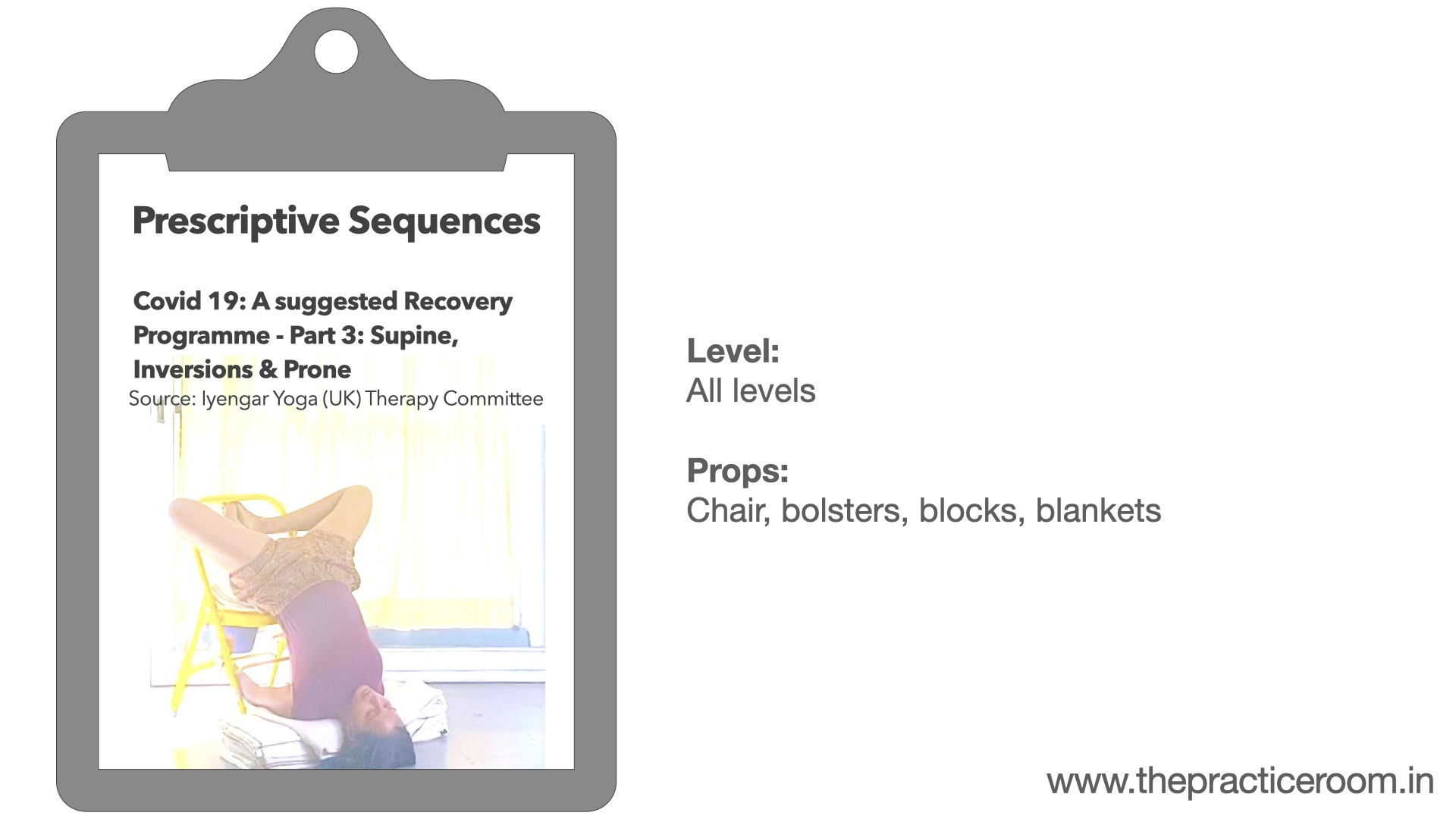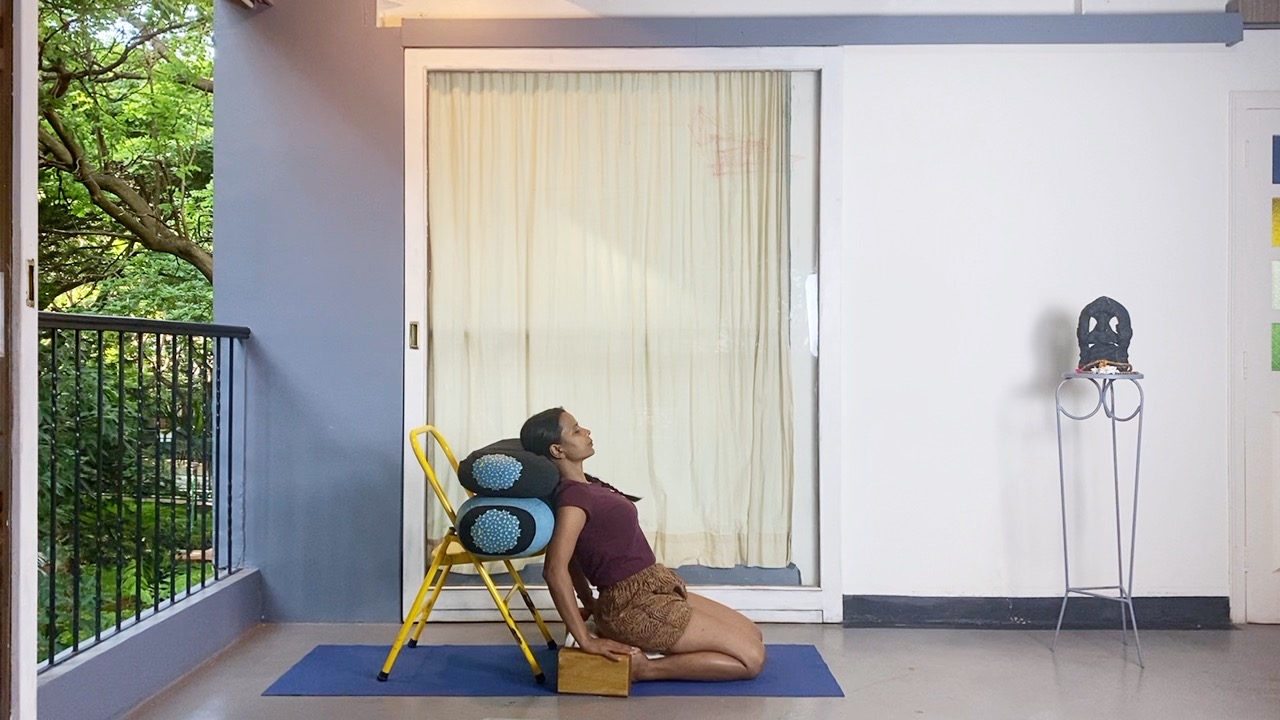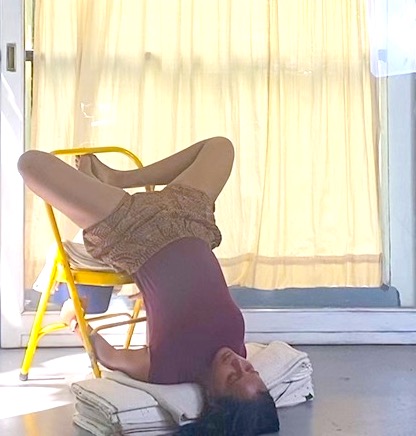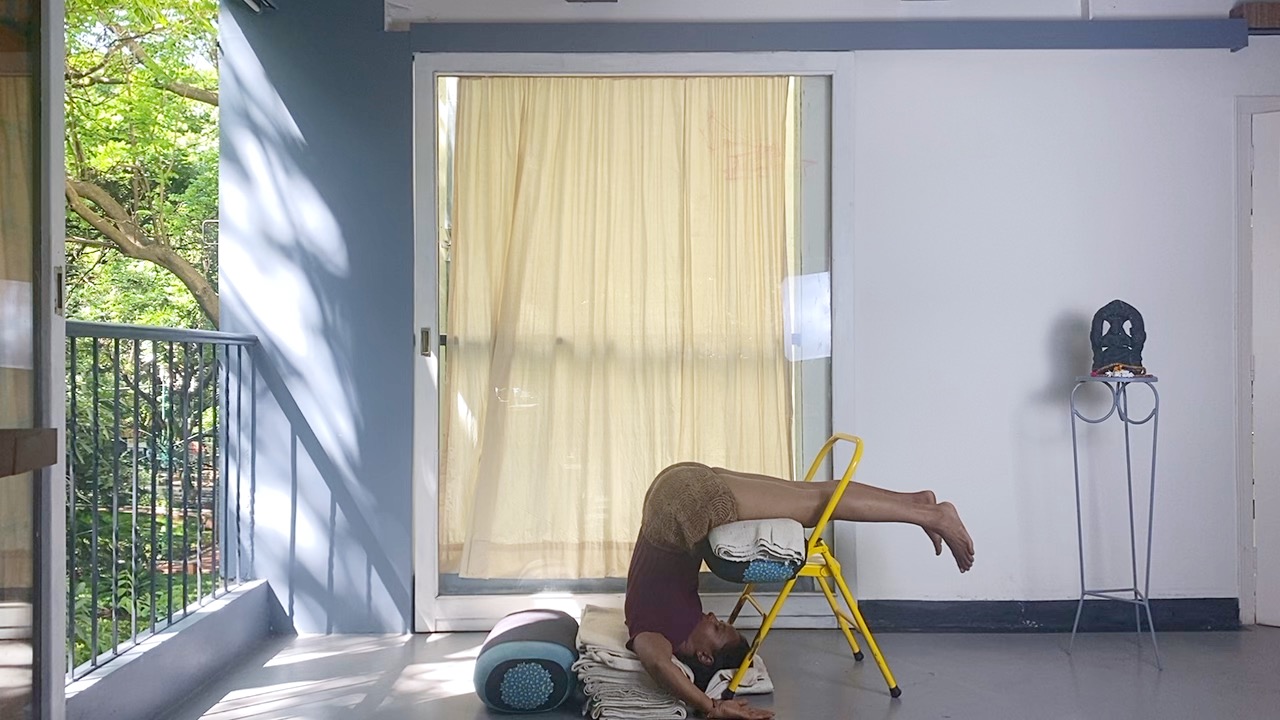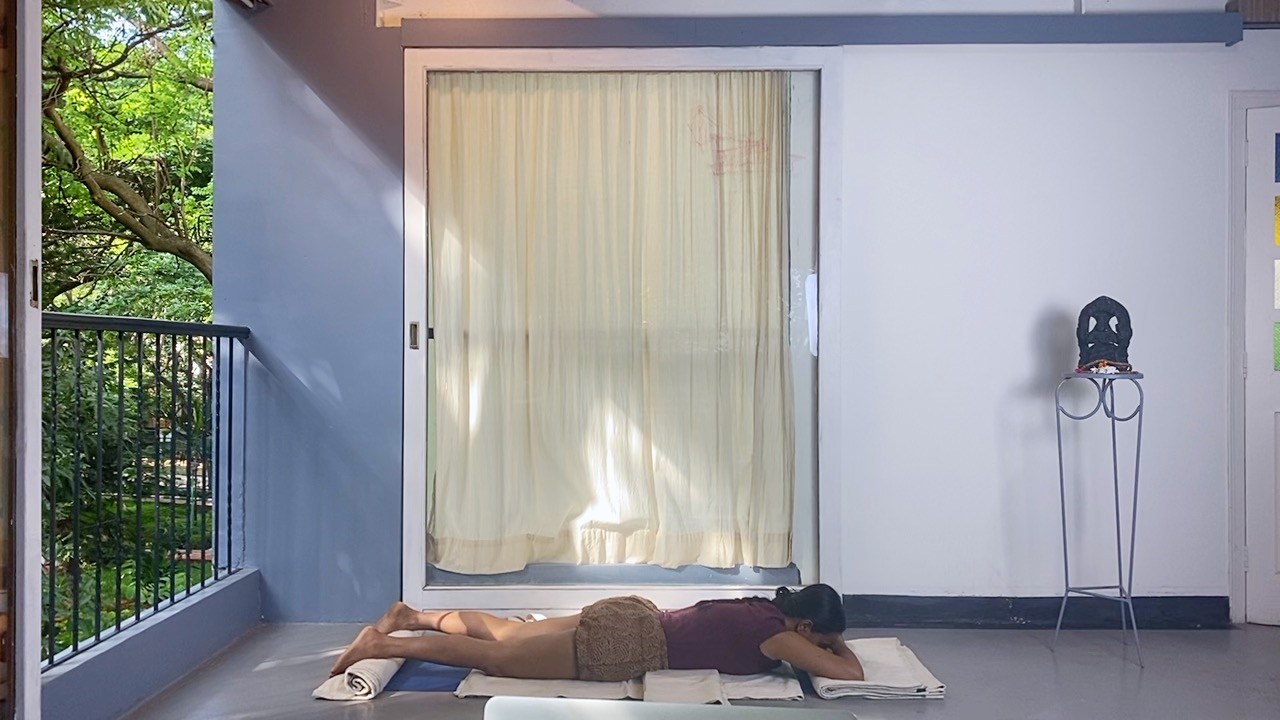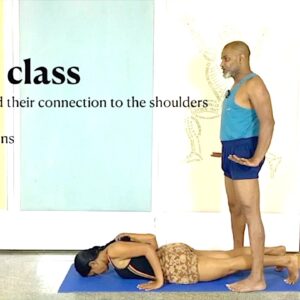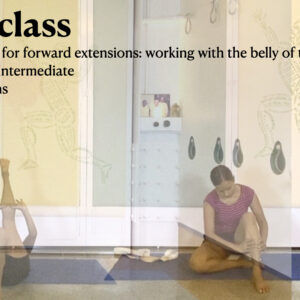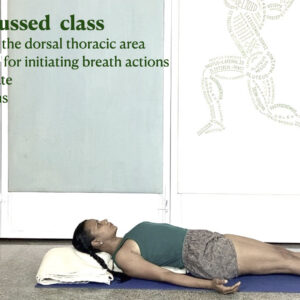Description
This Short Course for practice during Covid Recovery is note suitable for absolute beginners (especially the ‘inverted/ upside down’ positions in this session may be skipped in case you are actually in the Covid recovery stage, and have never pracitced inversions). Even though explanations and demonstrations are clearly given, it assumes basic knowledge of Asana positions, use of props, and ability to hold positions for extended periods of time.
For our free resources on Covid Recovery that Beginners can use.
All sessions in this Short Course are based on the Program developed by IY (UK) Therapy Committee. The program itself was developed in consultation with Senior teachers in the Iyengar tradition around the world, and also based on the therapy work based on developed by shri BKS Iyengar.
The entire sequence is divided into 14 categories. In our recording, we have broken the full practice into multiple parts for practical reasons. The complete sequence is listed separately for reference.
Positions are shown using the prop arrangements in the published sequence. For home practice, household object and furniture can be used to adapt the positions, even if the exact props are not available.
The 3rd part of this Short Course is supine positions, supported inversions, and prone Savasana.
SUPINE POSITINS
To be supine is to be on the back body with the face upwards, often with a support for the thoracic region and the head. Supports can be bolsters, benches, chairs, blankets or anything appropriate which allows the chest to be lifted and expanded, the abdomen to recede and soften and the head to rest.
Supine poses are often given in a restorative sequence. However for some people in the recovery process being supine can cause undue stress on the chest and lungs. A hard support such as a brick is not recommended, it should be a soft but firm support for lung issues. For anyone who finds these poses too much during the recovery phase, spend more time with the earlier sections above and include the reclining asanas and prone poses.
These are restful and restorative asanas, especially when you can stay in the supported pose long enough for the body to accept the actions and begin to let go of tension and tightness.
note:
Stop doing any asana if there are sensations of heat, tightness or any uncomfortable feeling in the area under and around the ribs.
INVERSIONS
To be inverted means to be in an upside-down position with the head down.
To be in any inversion stimulates lymphatic drainage. This plays a vital role in improving the effectiveness of the immune system. They are a huge part of the Immune System Programme, so we would expect them to have a big part in the recovery from this virus too.
We all know how important inverted asanas are for our practice and for our health however, there has to be caution and no-one should hurry back to full inversion practice until they are ready. One of the possible outcomes of this virus is a weakening of the circulatory system (orthostatic hypotension or LBP), and if present then inversion practice would not be recommended until the system was strengthened. So we would encourage the first inversion to come back into practice as Setu Bandha Sarvangasana.
Benefits of Inversions
Inverted asanas work as a panacea for many ailments. They work on the hormonal system of the body promoting health, whilst bringing discipline to the mind and calm within. They help to restore balance in the endocrine system and can have a positive effect on the entire body.
Salamba Sirsasana develops willpower and clarity of thought.
Salamba Sarvangasana builds patience and emotional stability, it soothes the nerves.
Supported Halasana is very restful. It soothes the brain and the nerves and can be beneficial when suffering from fatigue.
Setu Bandha Sarvangasana removes fatigue, rejuvenates the nerves and improves circulation in the chest region.
Regular correct practice of all of these asanas will help to relieve breathing difficulties and restore health to the lungs.

